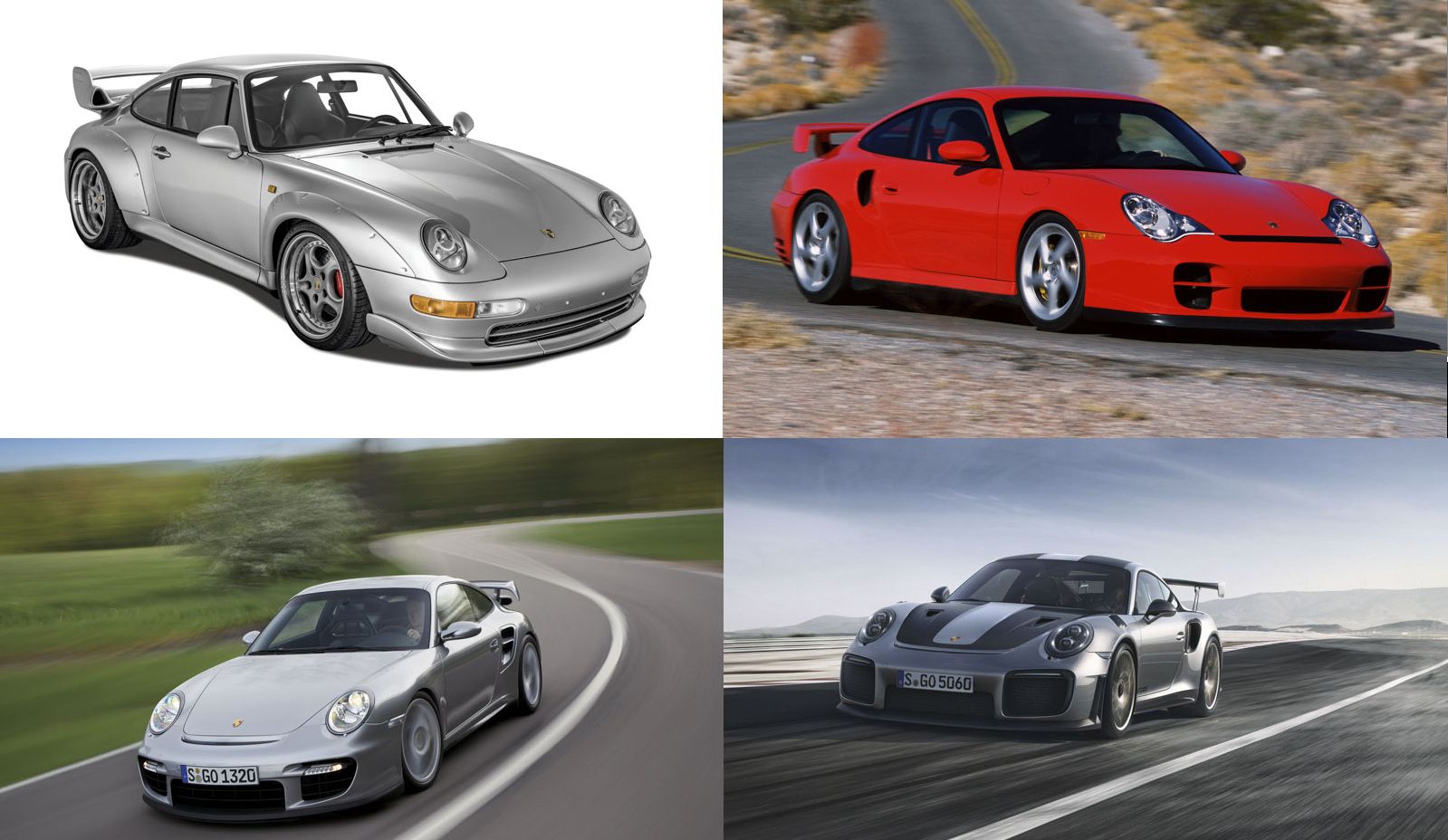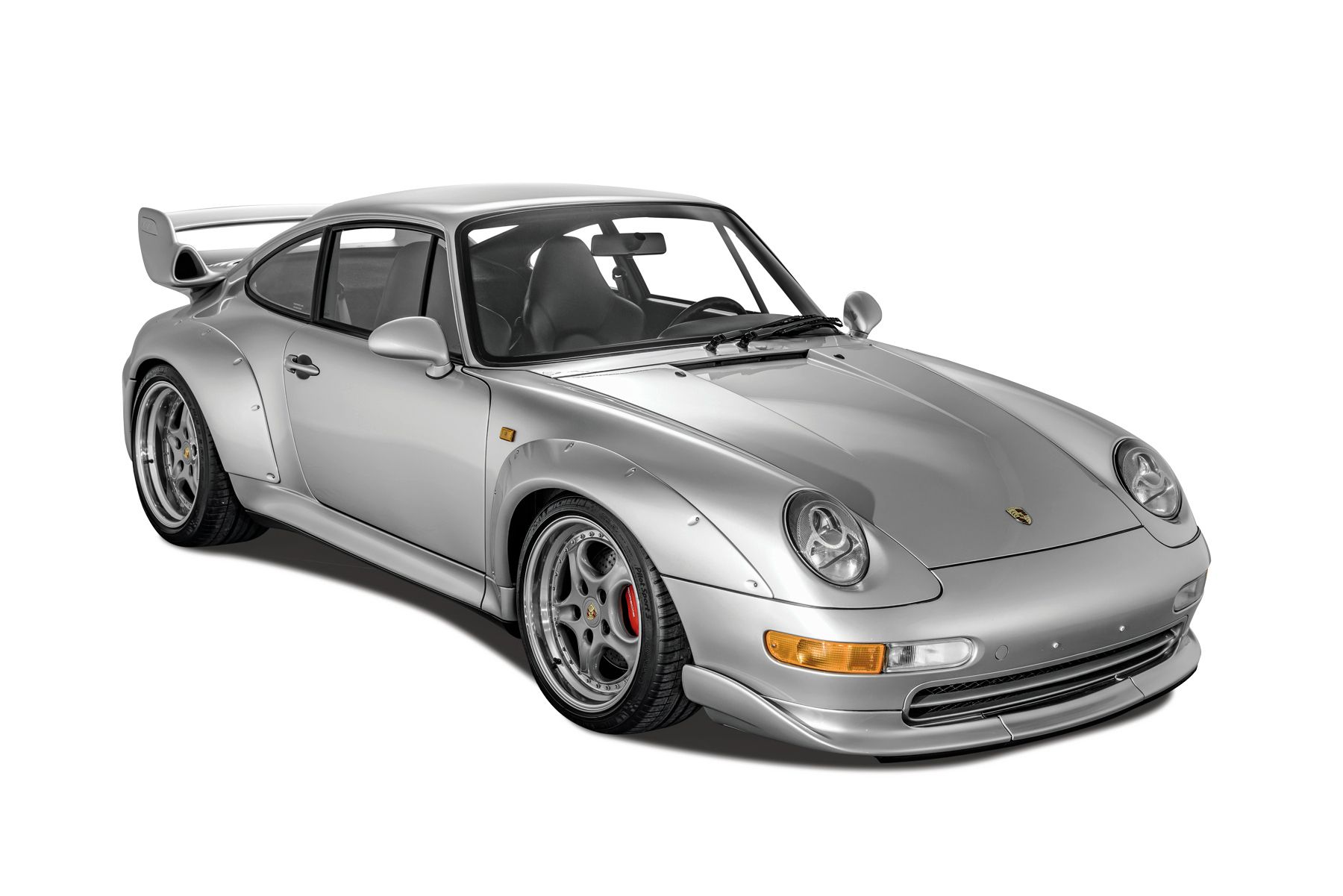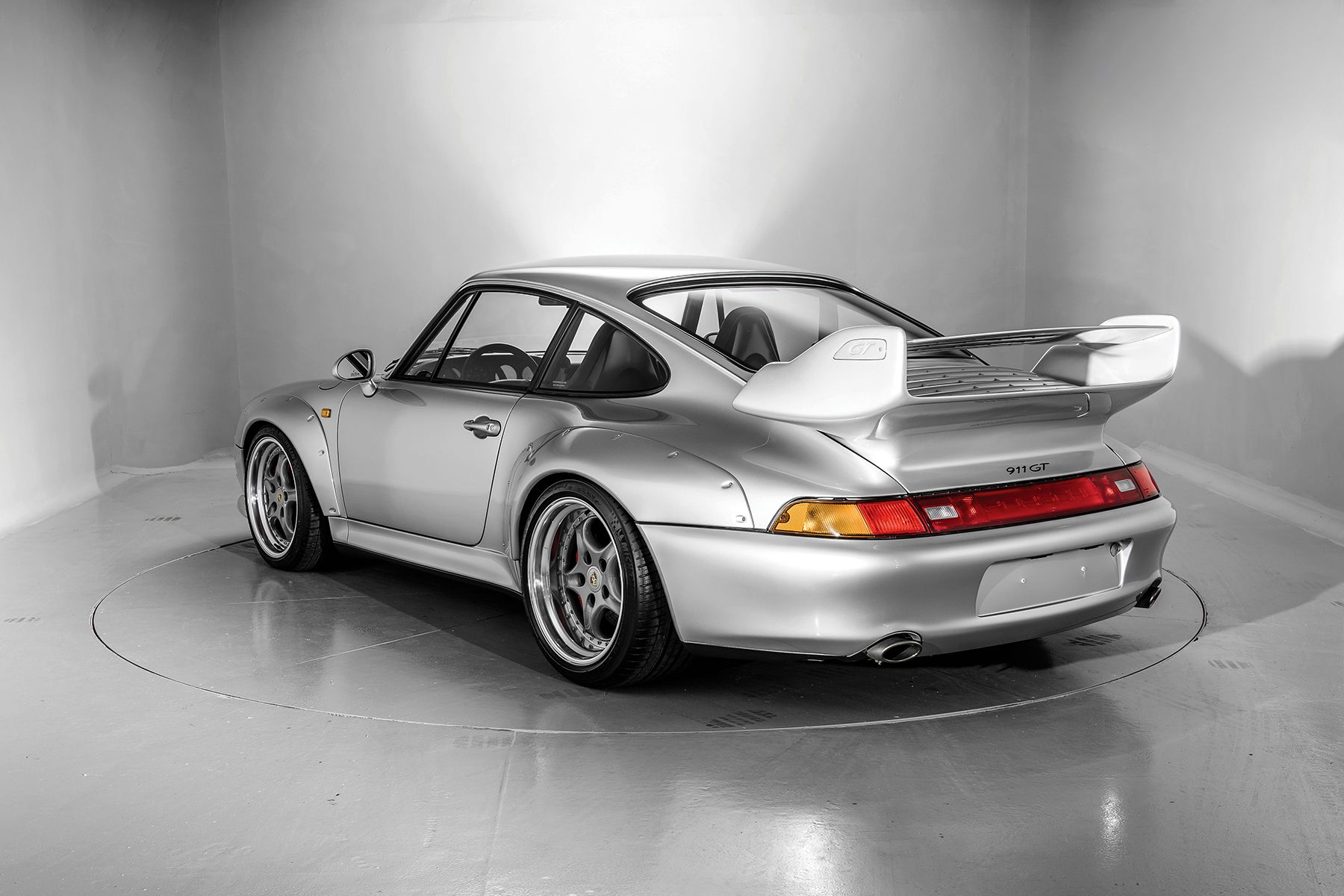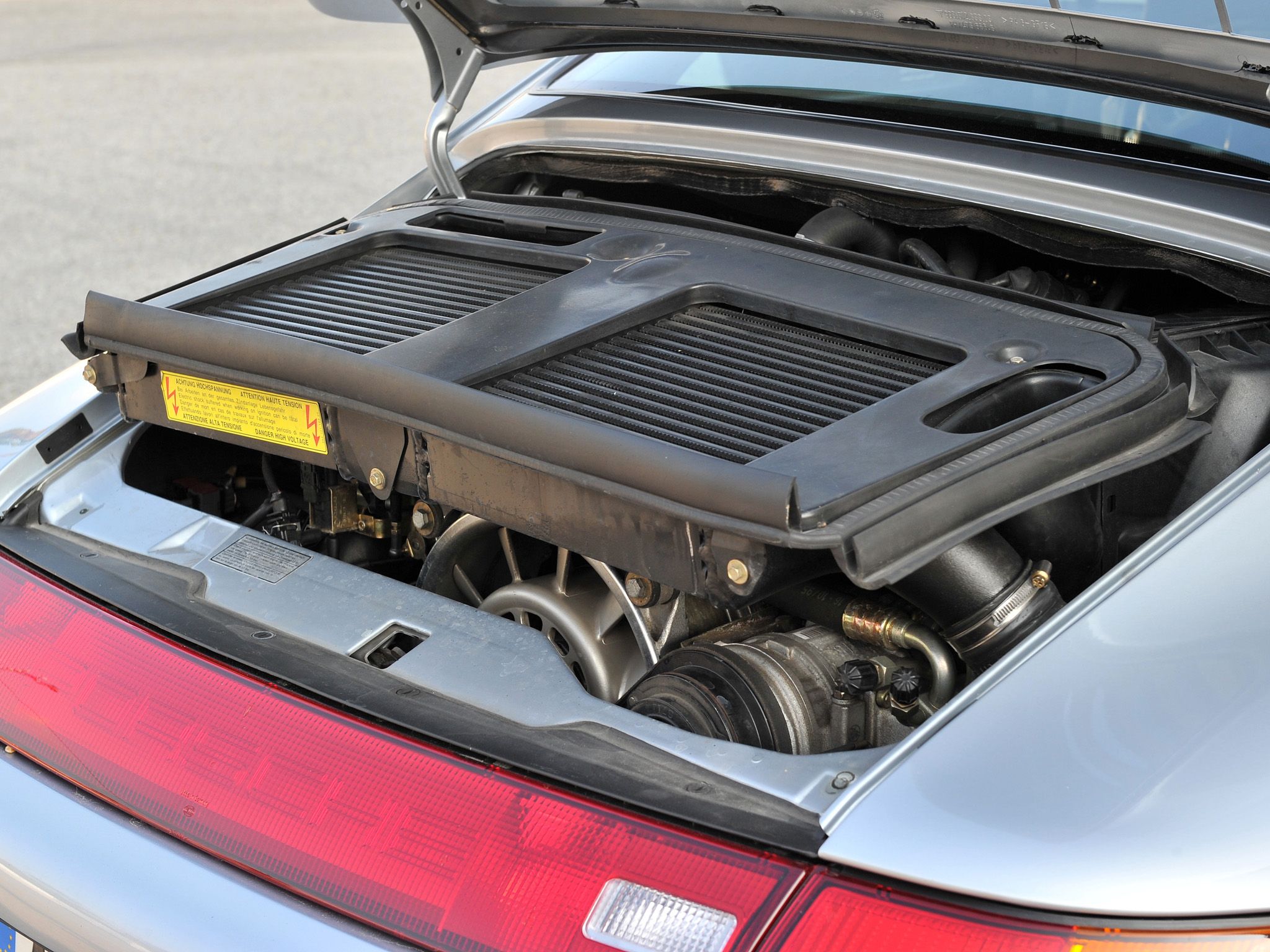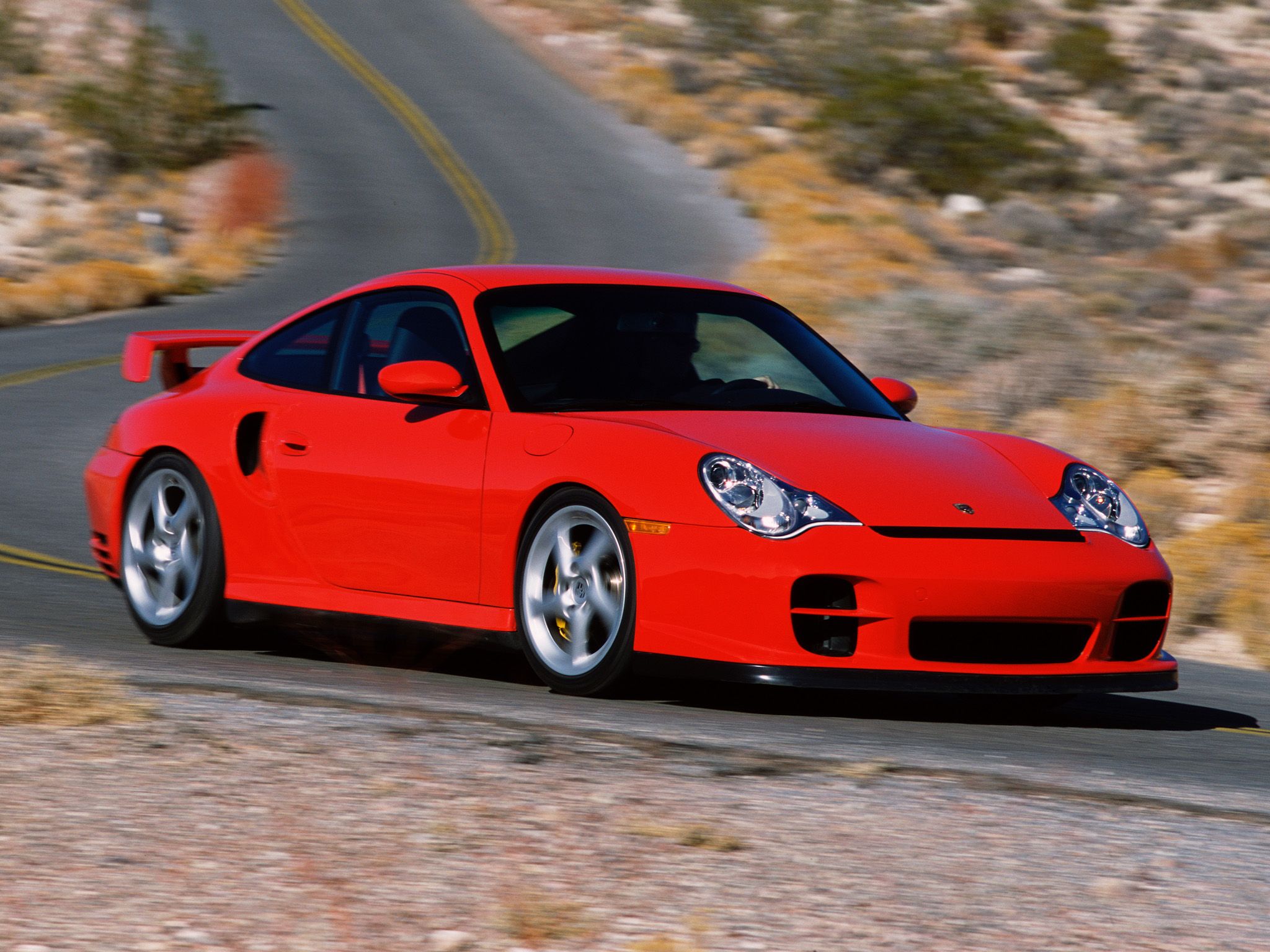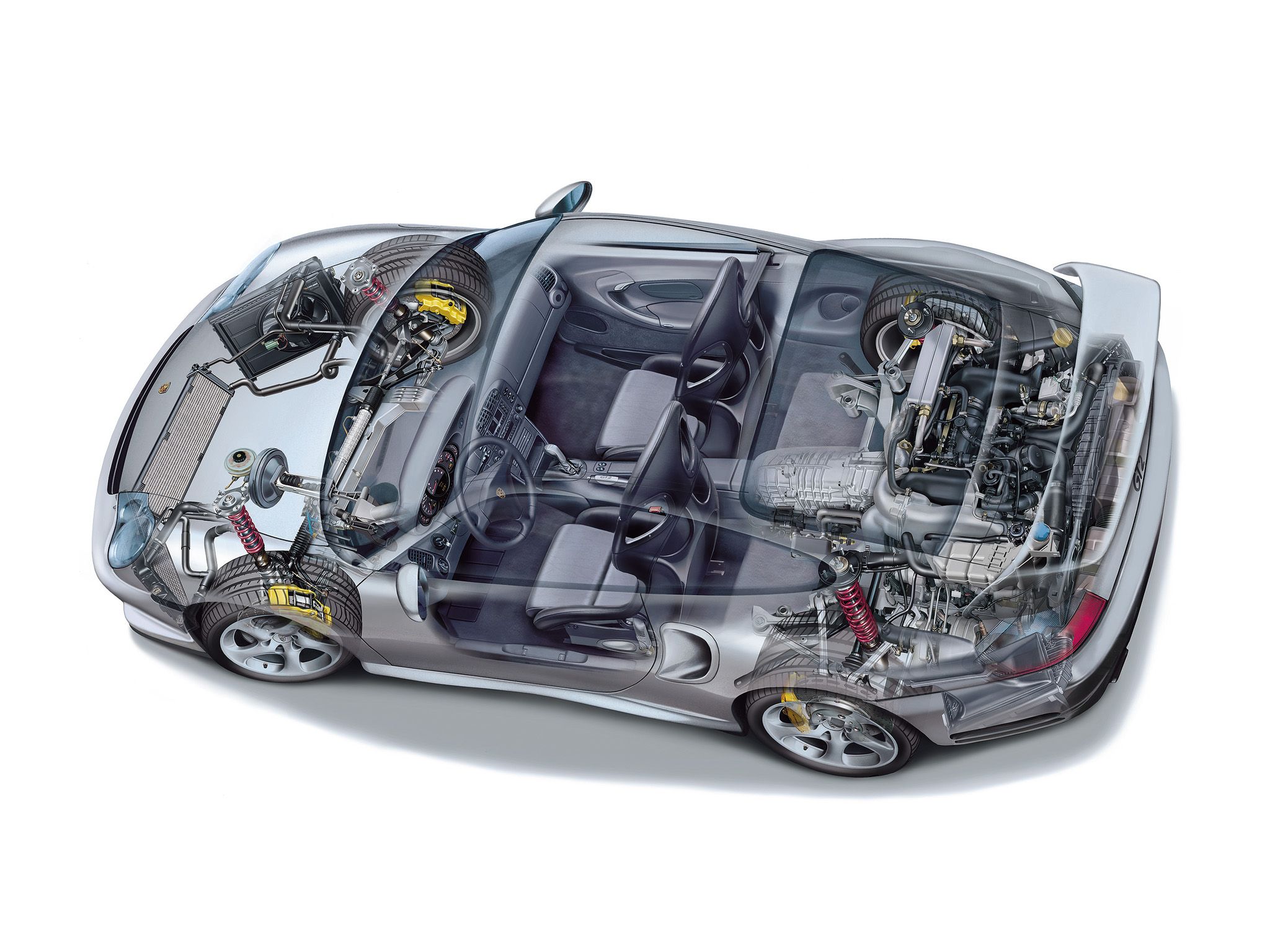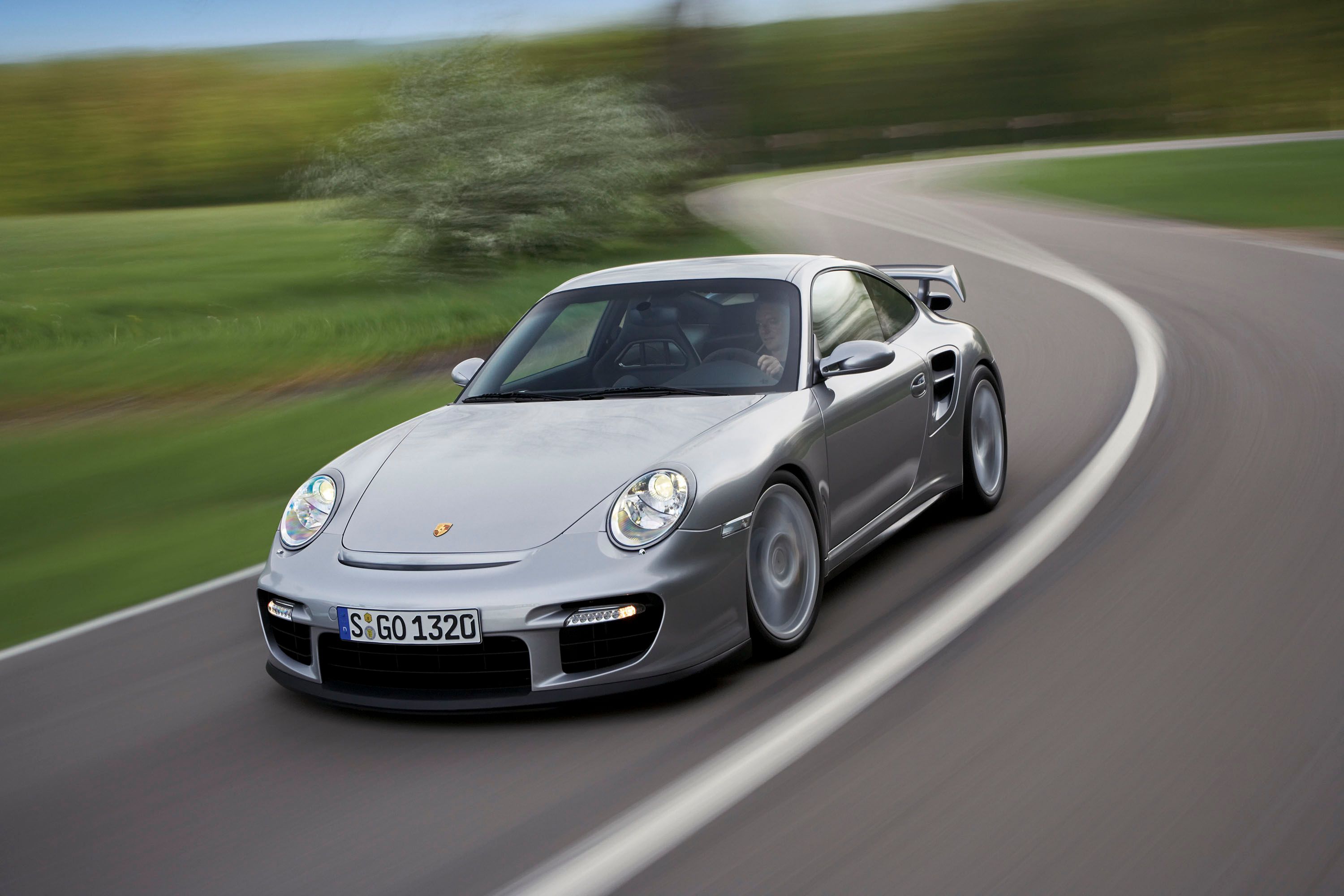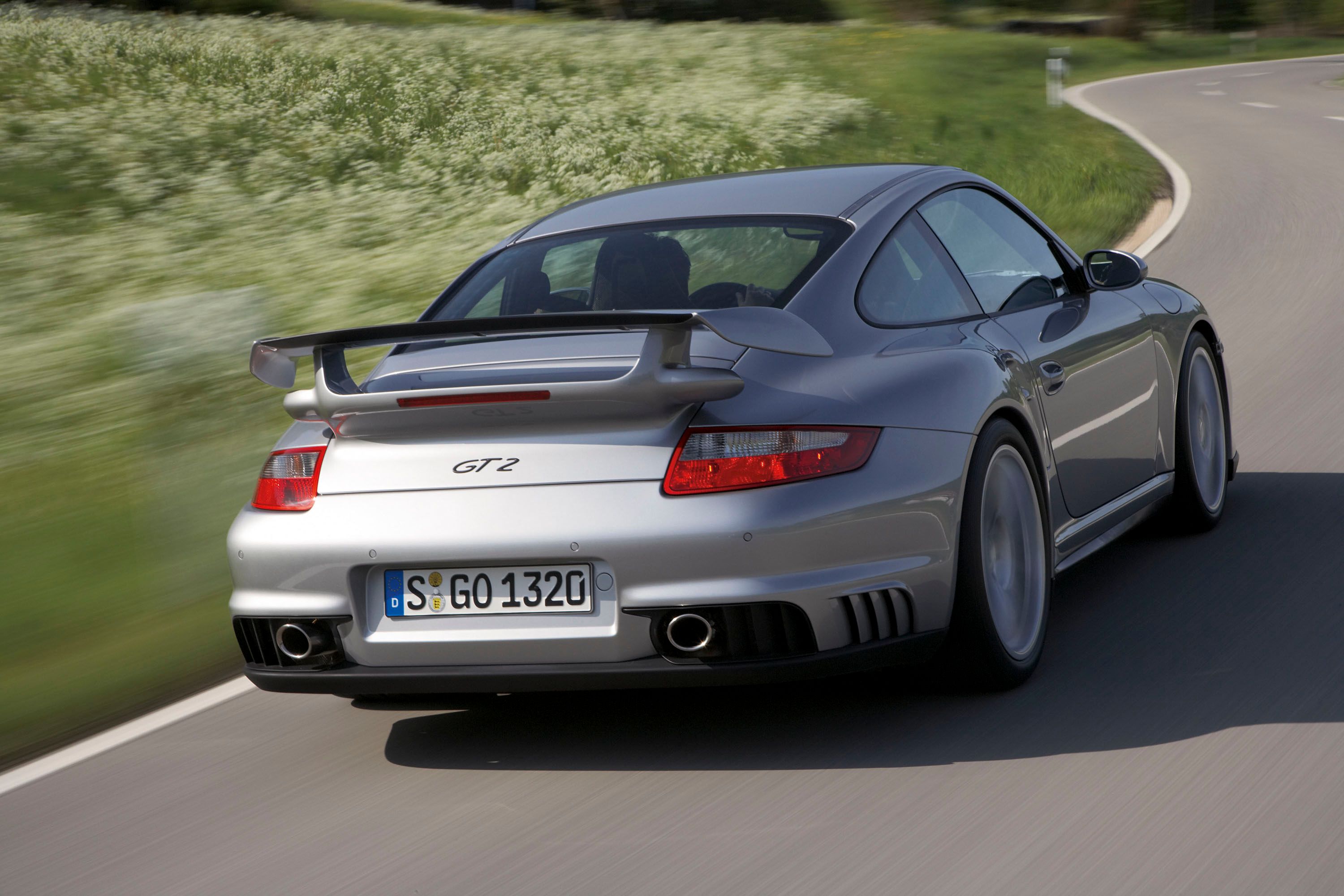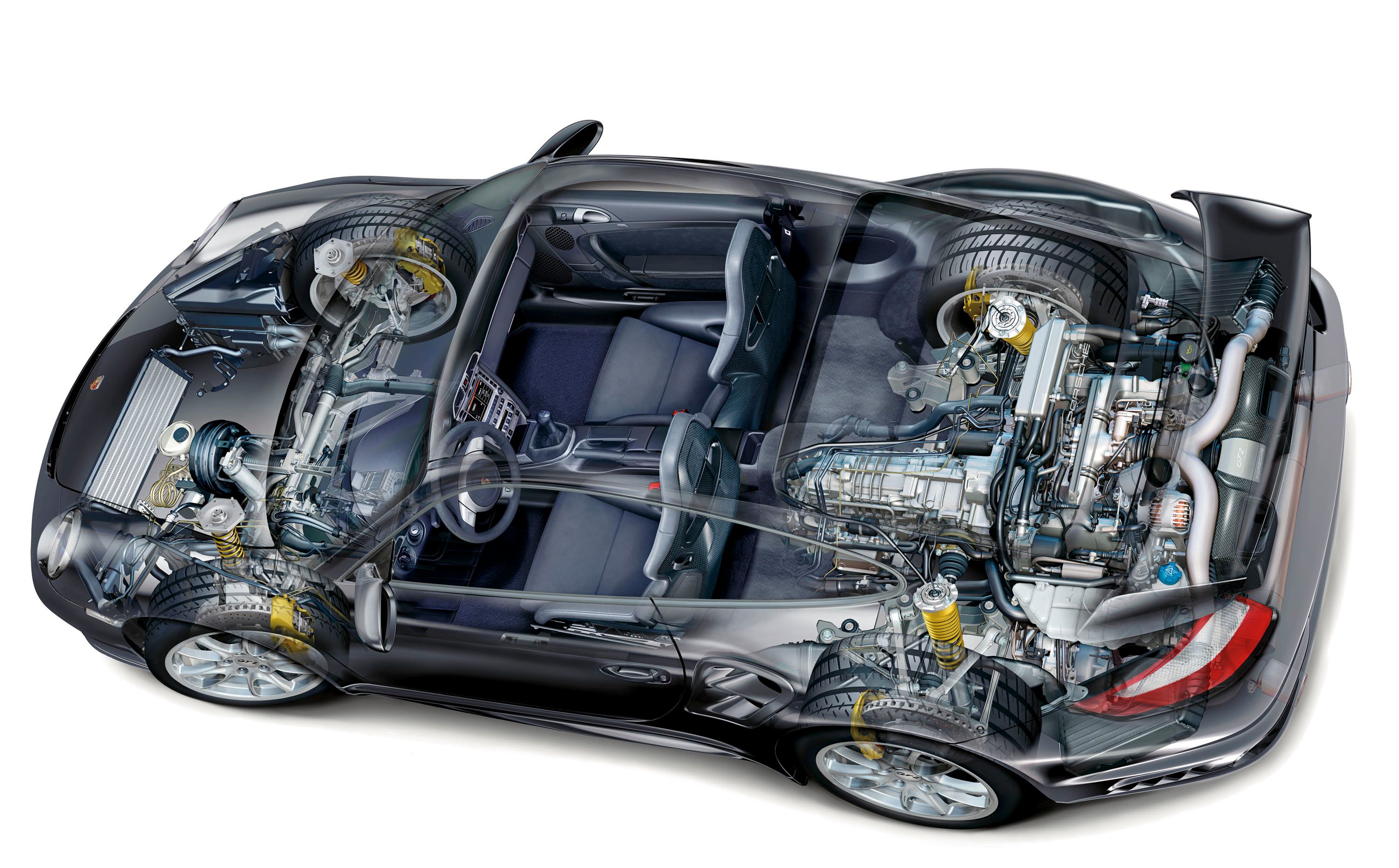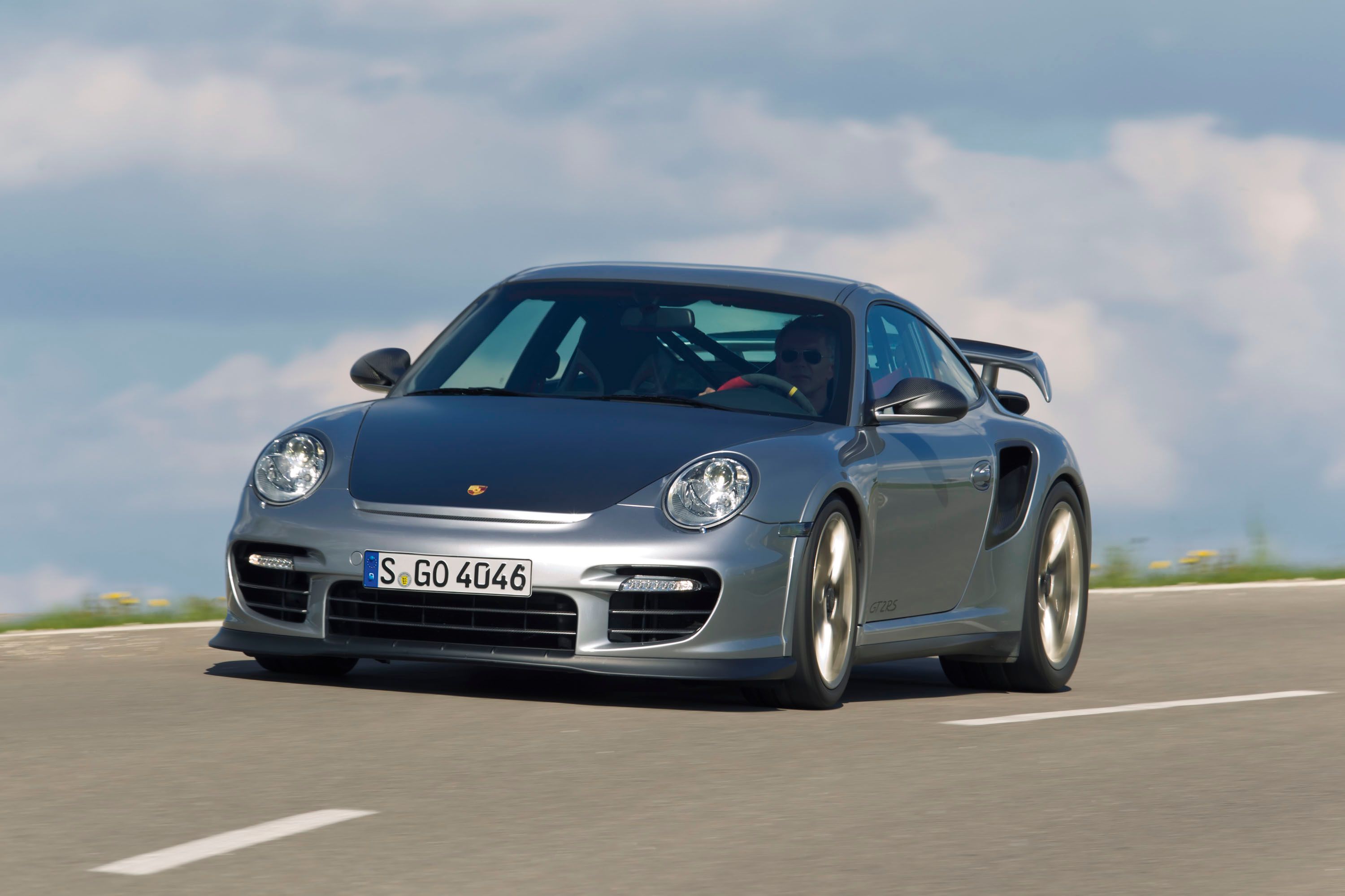Porsche has been offering high-performance versions of the 911 since the early 1970s, with the most iconic model being the Carrera 2.7 RS. But once the Germans adopted turbocharging, the traditional RS stepped down, making room for a new range-topping sports car, the 911 GT2. First introduced in 1993, the GT2 is now in its fourth generation, which is based on the 991.2 model. It's faster, more powerful, and more aerodynamic than its predecessor, while also boasting more technology than ever. The new GT2 RS is a massive departure from the first GT2 from more than two decades ago under the skin, and we're going to look at those changes in a drivetrain comparison for all four generations.
The GT2 was born out of the 993-generation 911 as a homologation vehicle for motorsport purpose. Built to meet GT2 class regulations, the road cars were named accordingly and the nameplate survived to this day. The first GT2 was discontinued in 1998, but Porsche revived the badge in 2002 for the 996 model. After three years, it was again discontinued, only to return as the 997 GT2 in 2008. The 997 was also the first GT2 to get an RS designation, which was offered in very limited numbers from 2010 to 2012. Come 2017 and the GT2 returns to the market as an RS model only. Since 1993, the drivetrain not only swapped air-cooled for water-cooled engines, but also gained more displacement a lot more power. Let's find out more about that below.
Continue reading for the full story.
The Original GT2
The 993-gen GT2 is famous for not only being the first GT2 ever, but also for being the only GT2 to use an air-cooled engine. The mill in question was a twin-turbo, 3.6-liter flat-six that Porsche also offered in the standard turbo models, but with certain revisions for the more extreme GT2. Output was rated at 444 horsepower and 432 pound-feet of torque, which made it as powerful as the range-topping Turbo S.
The transmission was a six-speed manual, with no option for an automatic, which weren't as popular as they are today. Charging from 0 to 60 mph took 3.8 seconds, while top speed was estimated at 187 mph. Interestingly enough, the track-prepped GT2 was a tenth-second slower than the Turbo S. But needless to say, it was way more capable at the race track and became a legend the moment it was launched.
Switch to Water Cooling
In 1999, the 993-generation sports car was replaced with the new 996, which also brought a redesigned GT2 in 2002, four years after the first version was discontinued. On top of the new design, which was evolutionary, the 996 GT2 was no longer a homologation car. With Porsche having abandoned the GT2 class in favor of the GT3 category, thus focusing on the new, naturally aspirated 911 GT3, the GT2 was developed primarily as a road car.
The engine was still a 3.6-liter flat-six, but most of the internals were new, while water cooling was introduced instead of air cooling. Output was originally rated at 456 horsepower, not much of an improvement over the previous car, but it was later increased to 476 horses and 470 pound-feet of torque. Obviously, the extra oomph and the redesigned chassis and body brought some performance improvements. The 0-to-60 mph sprint was now achieved in 3.6 seconds, two tenths quicker, while top speed jumped from 187 to 198 mph. The transmission was also a six-speed manual, but with revised internals and optimized shifting. The 996 GT2 remained in production for three years, which makes it the most short-lived GT2 for the first three generations.
First GT2 RS and 600+ Horsepower Ratings
In 2008, some three years after the 996-gen 911 was replaced by a new, 997-badged version, Porsche launched the third iteration of the GT2. The new engine was based on the existing 3.6-liter flat-six, also with water cooling, but it featured twin variable geometry turbochargers, which brought a significant power bump. Output jumped from 476 to 523 horsepower, while torque increased from 470 to 505 pound-feet, which made it the second-most powerful road-going Porsche in history, after the Carrera GT supercar.
Interestingly enough, although powerful, the 997-gen GT2 wan't quicker than its predecessor, being quoted to hit 60 mph in 3.8 seconds. On the flipside, top speed was significantly higher at 204 mph. Notable features included a new, quicker six-speed manual transmission and carbon-ceramic brake discs with multi-piston calipers. This generation was also the first to spawn an RS designation for the GT2. Announced to German dealers in Leipzich, it was conceived as a skunk-works effort in order to beat Nissan GT-R's 7:27-minute record at the Nurburgring.
Featuring a revised aerodynamic kit and weight-saving measures that shaved 150 pounds off the GT2, the GT2 RS was also significantly more powerful at 612 horsepower and 516 pound-feet of twist. It was so powerful that it remained the most potent road-legal Porsche until the German firm unveiled the 918 Spyder supercar in 2013. It was notably quicker with a 0-to-60 sprint of only 3.4 seconds, while its top speed was equally impressive at 205 mph. Obviously, the GT2 RS eclipsed the Nissan GT-R at the 'Ring by an amazing nine seconds. The 997 GT2 RS is also the rarest example to wear the iconic badge.
The Ultimate 911
Following a long, five-year wait, the GT2 returned to the market for the 2018 model year. As it was to be expected, Porsche skipped the GT2 for the first three years into the 991-generation 911 and brought it into dealerships right after the sports car received its facelift. There are many reasons for this wait, but one of them is definitely the still-new rear axle steering system, which improves the GT2's ability at the track. Another particular feature for this generation is that it's the only one to skip the GT2 and arrive with a "GT2 RS" badge from the very beginning.
The new RS also set numerous benchmarks. For starters, it's the first of its kind to use the bigger, 3.8-liter flat-six. Also backed by a couple of turbochargers, the new unit cranks out 700 horsepower and 553 pound-feet of torque, which makes it the first GT2 to reach the 700-horsepower mark. With a 0-to-60 mph sprint of 2.7 seconds, it's also the first GT2 to get there in less than three clicks, while the 211-mph speed is yet another solid benchmark. Finally, the GT2 RS comes with an impressive 7:18-minute lap around the Nurburgring.
Evolution?
A quick comparison between the first and the latest 911 GT2 is enough to notice how much the nameplate improved over the years. Output increased by no less than 256 horsepower and 121 pound-feet, while the 0-to-60 mph sprint dropped by 1.1 seconds and top speed increased by a whopping 24 mph in 24 years. That's impressive no matter how you look at it, much more so if you take into account that the new GT2 RS is the second fastest and most powerful Porsche, second only to the 918 Spyder hybrid supercar.
Four-Way Drivetrain Comparison
|
|
Porsche 911 GT2 (993) |
Porsche 911 GT2 (996) |
Porsche 911 GT2 (997) |
Porsche 911 GT2 RS (997) |
Porsche 911 GT2 RS (991) |
|
Engine type |
Air-cooled |
Water-cooled |
Water-cooled |
Water-cooled |
Water-cooled |
|
Displacement |
3.6-liter |
3.6-liter |
3.6-liter |
3.6-liter |
3.8-liter |
|
No. Of Cylinders |
6 |
6 |
6 |
6 |
6 |
|
Horsepower |
444 HP |
476 HP |
523 HP |
612 HP |
700 HP |
|
Torque |
432 LB-FT |
470 LB-FT |
505 LB-FT |
516 LB-FT |
553 LB-FT |
|
Transmission |
six-speed manual |
six-speed manual |
six-speed manual |
six-speed manual |
PDK |
|
0 to 60 mph |
3.8 seconds |
3.6 seconds |
3.8 seconds |
3.4 seconds |
2.7 seconds |
|
Top Speed |
187 mph |
198 mph |
204 mph |
205 mph |
211 mph |
|

